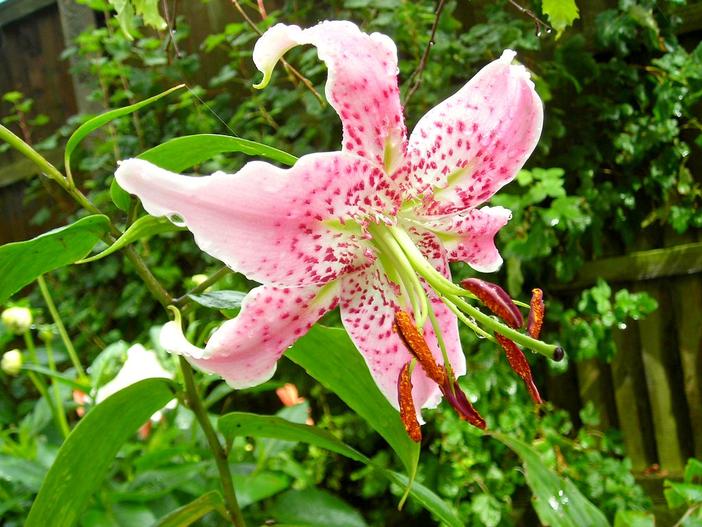Japanese Lily
(Lilium speciosum)
Japanese Lily (Lilium speciosum)
/
/

instrumaker
CC BY 2.0
Image By:
instrumaker
Recorded By:
Copyright:
CC BY 2.0
Copyright Notice:
Photo by: instrumaker | License Type: CC BY 2.0 | License URL: https://creativecommons.org/licenses/by/2.0/ | Uploader: instrumaker | Publisher: Flickr




















Estimated Native Range
Summary
Lilium speciosum, commonly known as Japanese Lily, is a deciduous perennial herb native to Japan and China, where it thrives in forest margins, grassy slopes, and mountainous regions. It can reach up to 1.2 meters (3 ft 11 in) in height and 0.3 meters (1 ft 0 in) in width. The Japanese Lily is renowned for its large, showy flowers that bloom from late summer to early autumn (August to September) in north temperate regions. The flowers range from white to deep pink, often with a crimson-spotted throat, and emit a strong, sweet fragrance. This species is particularly valued for its late flowering period, which extends the garden display season.
The Japanese Lily is a popular ornamental plant, appreciated for its striking flowers and ease of maintenance. It is often used in borders, cottage gardens, and as a cut flower due to its long stems and fragrant blooms. Cultivation requires well-drained, humus-rich soil and a position in full sun to partial shade. While it prefers consistent moisture, it is important to avoid waterlogged conditions. Mulching can help maintain soil moisture and temperature. Japanese Lily is susceptible to lily beetle infestations and viral diseases, which gardeners should monitor for.CC BY-SA 4.0
The Japanese Lily is a popular ornamental plant, appreciated for its striking flowers and ease of maintenance. It is often used in borders, cottage gardens, and as a cut flower due to its long stems and fragrant blooms. Cultivation requires well-drained, humus-rich soil and a position in full sun to partial shade. While it prefers consistent moisture, it is important to avoid waterlogged conditions. Mulching can help maintain soil moisture and temperature. Japanese Lily is susceptible to lily beetle infestations and viral diseases, which gardeners should monitor for.CC BY-SA 4.0
Plant Description
- Plant Type: Herb
- Height: 4-7 feet
- Width: 1-1.5 feet
- Growth Rate: Moderate
- Flower Color: Pink, White
- Flowering Season: Summer
- Leaf Retention: Deciduous
Growth Requirements
- Sun: Full Sun, Part Shade
- Water: Medium
- Drainage: Slow, Medium
Common Uses
Bee Garden, Bird Garden, Butterfly Garden, Edible*Disclaimer: Easyscape's listed plant edibility is for informational use. Always verify the safety and proper identification of any plant before consumption., Fragrant, Hummingbird Garden, Low Maintenance, Potted Plant, Showy Flowers
Natural Habitat
Native to forest margins, grassy slopes, and mountainous regions in Japan and China
Other Names
Common Names: Turk’s-Cap Lily, Oriental Lily
Scientific Names: , Lilium speciosum, Lilium speciosum var. rubrum, Lilium lancifolium var. glorioides, Lilium speciosum var. magnificum,
GBIF Accepted Name: Lilium speciosum Thunb.